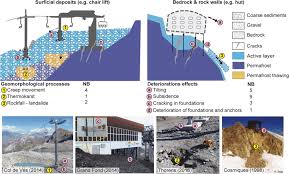
The destabilization of regions is a complex issue that affects political, economic, and social structures, often leading to long-lasting conflicts and crises. Understanding the root causes, impacts, and possible solutions is crucial for policymakers, citizens, and global organizations alike. This article delves into the various dimensions of regional destabilization, examining the forces behind it and the repercussions it has on populations and nations.
Understanding Regional Destabilization
Regional destabilization refers to the breakdown of stability within a specific geographic area, often characterized by political unrest, violence, economic turmoil, and social disintegration. This phenomenon is typically triggered by internal and external forces that disrupt the established order and create chaos within the region.
Defining Regional Instability
Regional instability can manifest in many forms, from prolonged civil wars to political coups, economic crises, and social uprisings. It often leads to a vacuum of authority, where legitimate governance collapses, creating opportunities for non-state actors, militant groups, and external powers to exert influence.
Historical Examples of Destabilization
Notable instances of destabilization include the Balkan conflicts in the 1990s, the Arab Spring in the early 2010s, and ongoing crises in the Middle East. Each of these examples has left deep scars on the respective regions, highlighting the far-reaching impact of destabilization.
Key Causes of Regional Destabilization
Several factors contribute to the destabilization of regions, each influencing the stability of political, economic, and social structures in different ways. Below are some of the primary causes.
Political Power Struggles
Political instability often arises when power is contested, whether through disputed elections, coups, or leadership vacuums. These struggles frequently lead to internal conflicts, undermining state institutions and governance.
Economic Disparities and Resource Competition
Economic inequality, lack of opportunities, and competition over scarce resources such as oil, water, or arable land often exacerbate tensions. When a population feels excluded from wealth distribution, unrest and rebellion become more likely.
Ethnic and Religious Conflicts
Ethnic, religious, or cultural differences can heighten tensions, especially when one group feels marginalized. Historical grievances, prejudice, and discriminatory policies can ignite violence and lead to civil wars, as seen in places like Rwanda and Sudan.
Foreign Interventions
External interventions, whether through military involvement or political influence, often exacerbate regional instability. Foreign powers may support one faction over another, contributing to further divisions and prolonging conflict.
Environmental and Climate Change Factors
The impact of climate change, including droughts, desertification, and rising sea levels, has caused widespread displacement and resource shortages. These environmental pressures often contribute to migration, conflict, and regional destabilization.
Consequences of Destabilization
The fallout from destabilization is severe and wide-ranging. Its consequences affect not only the region directly involved but also the international community, with global ramifications.
Humanitarian Crises
Regional instability typically results in a humanitarian crisis, marked by mass displacement, refugee flows, famine, and disease outbreaks. International organizations are often called upon to provide relief, but the sheer scale of such crises can overwhelm even the most well-prepared responses.
Political Vacuum and Emergence of Extremist Groups
In the absence of a functioning government, extremist groups, militias, and criminal organizations often rise to power. This creates further instability as these groups frequently resort to violence to achieve their goals, as seen with the rise of ISIS in Iraq and Syria.
Economic Collapse
Prolonged conflict and instability lead to economic collapse, as infrastructure is destroyed, trade routes are severed, and foreign investments are withdrawn. Unemployment, poverty, and inflation become rampant, leaving millions struggling to survive.
Global Security Threats
Destabilization in one region can spill over into neighboring areas, creating broader security concerns. Additionally, destabilized regions often become safe havens for terrorist groups, arms trafficking, and drug smuggling, posing significant risks to global peace and security.
Paths to Stability and Recovery
While regional destabilization can have devastating effects, recovery is possible with coordinated efforts at local, national, and international levels. Below are some strategies that have been employed to restore stability in destabilized regions.
International Diplomacy and Peacebuilding
Diplomatic efforts, often led by international organizations like the United Nations, can help broker ceasefires and peace agreements. Long-term peacebuilding efforts, which include rebuilding political institutions and promoting reconciliation, are essential to prevent future conflict.
Economic Reconstruction and Aid
Economic recovery is crucial for stabilizing a region. International aid, foreign direct investment, and the rebuilding of infrastructure are necessary to restore livelihoods, create jobs, and reduce poverty. Micro-financing and grassroots development projects can empower local communities to rebuild.
Inclusive Governance and Political Reforms
A key to long-term stability is ensuring that all groups are represented in the political process. Reforms that address corruption, promote democratic governance, and protect minority rights are critical to preventing further conflicts.
Addressing Environmental and Resource Management
Given that environmental factors often contribute to destabilization, addressing issues such as water scarcity, desertification, and food security is critical. Sustainable resource management programs and climate adaptation strategies can help reduce tensions over scarce resources.
The Need for Comprehensive Solutions
Regional destabilization is a multifaceted problem requiring comprehensive and sustained solutions. Tackling the root causes, from political power struggles to economic inequality, and supporting recovery through diplomacy, economic aid, and governance reforms are essential for creating lasting peace and stability. Only through concerted efforts by local, regional, and international actors can destabilized regions recover and thrive once again.In a globalized world, the impact of regional instability is not confined to one area but can reverberate across borders. Therefore, addressing destabilization is not just a regional concern but a global imperative.
Subscribe to Follow Global Trends for daily global news.
Find Out How To Make Money As A Full Time Writer/Blogger Guide.
To Advertise, Advertise Your Affiliate Links on FollowGlobalTrends.com for Just $1 Per Link Per Month!
Related Articles
Israel’s War on Gaza Live: Israeli Attacks Kill 68 in 24 Hours
Israel’s War on Gaza: Live Updates on Israelis in Cairo as US Says Truce in Sight
Israel’s War on Gaza Live: Truce Still Elusive as Israeli Attacks Kill 52
Brief: Israel War on Gaza Live: No Letup in Israeli Attacks Ahead of Truce Talks
Written by: Enyoghasi Ngozi pricillia

